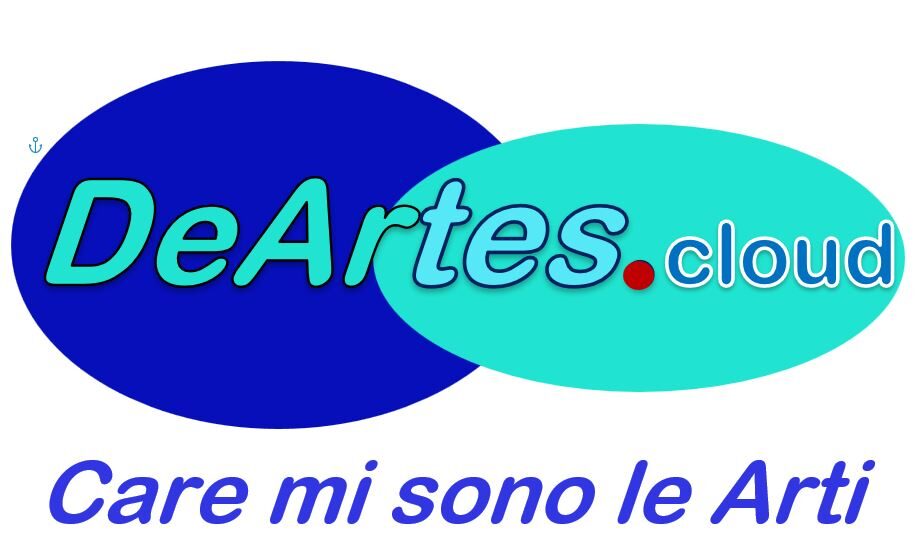
Il Museo Guggenheim Bilbao presenta Bilbao e la pittura. In mostra, una selezione di dipinti realizzati da artisti che lavorarono in questa città della Spagna tra la fine del XIX e l’inizio del XX secolo, dopo essere stati a Parigi, e ripresero le idee di modernità dell’Impressionismo francese e delle avanguardie. Nel fin de siècle, la città di Bilbao diventò uno dei centri più floridi della Spagna grazie all’industria navale e siderurgica, insieme all’attività commerciale, bancaria e culturale. Fra i cittadini di Bilbao di questo periodo circolava l’aspirazione e la volontà concreta di prosperare e di avanzare verso un futuro migliore per tutti. Una sorta di empatia che sfortunatamente si fratturò con l’arrivo della Guerra Civile nel 1936.
Questa esposizione, dal 29 gennaio al 29 agosto 2021, rappresenta e concettualizza momenti molto diversi della storia di Bilbao attraverso grandi murales pittorici che raffigurano, accanto ad altre scene, le navi commerciali nella ría e i bar con i tavolini all’aperto per lo svago, la vita dei borghesi e dei paesani, i rematori, la lotta e la morte nel mare, gli eroi dello sport, i lavori quotidiani in un porto peschereccio o le feste popolari a un villaggio della Biscaglia.
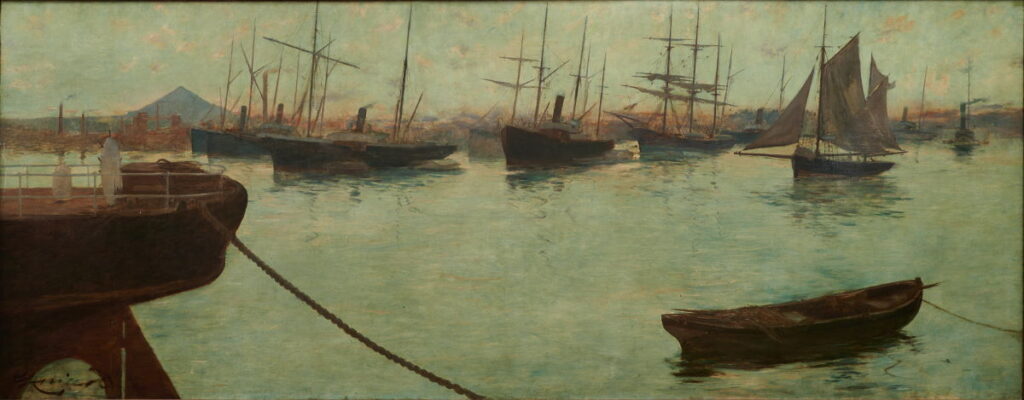
TOUR DELLA MOSTRA
Nello spazio introduttivo, il visitatore approfondisce la Bilbao del XIX secolo attraverso grandi fotografie. Quest’area contestualizza anche la figura dello scultore nativo di questa città, Paco Durrio, creatore di una delle più importanti sculture di arte pubblica della Spagna del XX secolo: Monumento a Juan Crisóstomo de Arriaga, situata di fronte al Museo di Belle Arti di Bilbao.
Durrio ha avuto un ruolo importante nella storia dell’arte perché, da un lato, è stato l’esecutore di Paul Gauguin, che gli affidò tutta la sua opera pittorica prima di intraprendere quello che sarebbe stato il suo ultimo viaggio in Polinesia nel 1895 e, dall’altro, passò il testimone dell’innovazione di Gauguin a un giovane Pablo Picasso appena sbarcato a Parigi nel 1901, al quale Durrio generosamente prestò il suo studio affinché quest’ultimo potesse realizzare i suoi primi pezzi scultorei.
Prima galleria
Ospita una selezione di opere di Adolfo Guiard, Ignacio Zuloaga, Anselmo Guinea, Manuel Losada e José Arrue che mostrano le varie vedute panoramiche che compongono il nuovo paesaggio economico, sociale e urbano di Bilbao alla fine del XIX secolo.
I personaggi dipinti in queste opere sono giovani uomini d’affari di Bilbao che erano amanti della musica e che commissionarono a questi pittori – i loro compagni di scuola – recentemente tornati da Parigi, una serie di murales per decorare le pareti del Kurding Club. Questi giovani giocarono un ruolo chiave nella creazione di istituzioni musicali a Bilbao tuttora esistenti, come la Società Filarmonica, l’Accademia Musicale di Biscaglia (precursore del Conservatorio) o l’Orchestra Sinfonica, e anche nel nuovo tessuto industriale e bancario.

Juntas Generales de Bizkaia Collection © Gustavo de Maeztu
Seconda galleria
I dipinti esposti in questa sala mettono faccia a faccia scene di mare e di montagna. Nonostante la vicinanza geografica tra essi, i villaggi di pescatori e le frazioni rurali utilizzano codici cromatici molto diversi, che possono essere apprezzati nella distintiva gamma coloristica, nella linearità e proporzione della pittura di navi e case coloniche. Esempi di entrambi i casi sono Ramón Zubiaurre e Gustavo de Maeztu.
Per quanto riguarda il mondo rurale, troviamo i dipinti di Adolfo Guiard e Francisco Iturrino. Lo spazio si chiude con Aurelio Arteta e Agustín Ibarrola, che raffigura gli strumenti del paesano, gli strumenti della vita nella fattoria, come se fossero sculture.
Terza Galleria
Questi dipinti costituiscono una visione etnografica del folklore, in cui gli artisti documentano, tra gli altri aspetti, il simbolismo della danza. Così, i visitatori scoprono il dipinto in costume di Manuel Losada, la danza nelle anteiglesie di Aurelio Arteta o la scena autunnale della raccolta delle mele di Jesús Olasagasti.
Sono in mostra anche diversi aspetti dei pellegrinaggi e delle feste religiose nelle opere di José Arrue. La sala è completata da Souletin Dances di José María de Ucelay, un dipinto che fornisce una visione enciclopedica di una delle danze più antiche dei Paesi Baschi.
DIDATTICA E CATALOGO
Nell’ambito del progetto Didaktika il Museo concepisce attività speciali che integrano le mostre e che sono trasmesse anche in streaming. Inoltre, tour architettonici e a piedi della città.
Il catalogo della mostra, di Kosme de Barañano, presenta un ampio percorso che affronta numerosi aspetti sociali, economici o politici dello sviluppo di Bilbao, nonché un’analisi dettagliata delle trentadue scene pittoriche che compongono la mostra.

BBVA Collection © José María de Ucelay
IL MUSEO
315.908 persone hanno visitato nel 2020 il Museo Guggenheim di Bilbao. Il 2020 è stato un anno molto diverso a causa della pandemia, che ha portato alla chiusura del Museo per quasi tre mesi, e delle conseguenti limitazioni alla mobilità, che hanno ridotto il numero dei visitatori del Museo. Nonostante queste circostanze avverse, i dati complessivi del Museo sono positivi grazie al follow-up del pubblico e al massiccio sostegno delle iniziative digitali sviluppate attraverso video, workshop, talk e visite online e perché, quando le circostanze lo hanno permesso, il grande pubblico ha visitato di persona il Museo.
Durante la quarantena primaverile, quando il Museo era chiuso al pubblico, è stata lanciata l’iniziativa digitale #GuggenheimBilbaoLive, attraverso la quale sono stati realizzati un totale di 55 video sulle mostre e sugli aspetti meno noti dell’attività del Museo, insieme a narratori e laboratori di bambini. In totale, questi video hanno ottenuto 2,3 milioni di visualizzazioni sui social media del Museo e hanno generato un totale di 90.000 interazioni molto positive con gli utenti.
Un’altra iniziativa digitale, questa volta lanciata a seguito delle restrizioni interne ai viaggi alla fine di ottobre, è stata # CuentaAtrásKandinsky, raggiungendo 1,6 milioni di visualizzazioni e registrando un totale di 44.000 interazioni. A ottobre, il Museo ha anche lanciato un progetto digitale di lunga durata costituito da una serie di video mensili #GuggenheimBilbaoInsights
UNA GRANDE COMUNITÀ
In termini di iscrizione individuale, 67.186 persone fanno parte della “Comunità” del Museo, incentrata su arte e cultura, e 46.736 follower.
MOTORE ECONOMICO
L’impatto economico che le attività del Museo Guggenheim di Bilbao hanno generato nel 2020 nell’area è stato il seguente:
La domanda totale generata come conseguenza dell’attività del Museo nei Paesi Baschi è stata di 115 milioni di euro.
Il contributo del PIL è stato di 101,7 milioni di euro.
Queste cifre hanno generato entrate aggiuntive per il Tesoro basco di 15,7 milioni di euro. Le attività del Museo hanno contribuito alla conservazione di 2.160 posti di lavoro.
Ancora una volta, nonostante le sfide poste da quest’anno, il Museo Guggenheim di Bilbao continua ad essere all’avanguardia tra le istituzioni culturali europee nell’autofinanziamento, che nel 2020 si aggirava intorno al 51%.
M.C.S.
Guggenheim Press, 4, 11 gennaio 2021
Immagine di apertura: En la Terraza Detalle
BILBAO E LA PITTURA
29 gennaio – 29 agosto 2021
www.guggenheim-bilbao.eus

BILBAO AND PAINTING
The Guggenheim Museum Bilbao presents Bilbao and Painting, an exhibition that brings together a selection of paintings created by artists working in this city of Spain in the late 19th and early 20th centuries, who traveled to Paris and incorporated the ideas of modernism from French Impressionism and the Avant-gardes. At the turn of the century, Bilbao became one of the most prosperous cities in Spain, thanks to its naval, and iron and steel industries, and its commercial, banking, and cultural activity. There is, at this period, among the citizens of Bilbao a craving and an earnest wish to succeed and steadily advance towards a better future for all, a sort of empathy that unfortunately will be shattered with advent of the Civil War of 1936.
The exhibition represents and conceptualizes different moments in the history of Bilbao through largescale paintings that portray, among other scenes, the commercial ships in the river and the terraces given to leisure, the life of the bourgeoisie and the village folk, the rowers, the struggle and death at sea, sporting heroes, the daily tasks in a fishing port or the festivities in a Biscayan anteiglesia.

TOUR OF THE EXHIBITION
In the exhibition’s introductory space, the visitor delves into 19th century Bilbao through large photographs; this area also contextualizes the figure of Bilbao-born sculptor Paco Durrio, creator of one of the most important public art sculptures of 20th century Spain: Monument to Juan Crisóstomo de Arriaga, located in front of the Bilbao’s Museum of Fine Arts.
Durrio played an important role in the history of art for, on the one hand, he was Paul Gauguin’s executor, who entrusted him with all his pictorial work before undertaking what would be his last trip to Polynesia in 1895 and, on the other, passed Gauguin’s baton of innovation to a young Pablo Picasso who had just landed in Paris in 1901, and to whom Durrio generously lent his studio so that the latter could make his first sculptural pieces.
First Gallery
This space holds a selection of works by Adolfo Guiard, Ignacio Zuloaga, Anselmo Guinea, Manuel Losada, and José Arrue that display the various panoramic views that comprise the new economic, social, and urban landscape of Bilbao at the end of the 19th century.
The characters painted in these works are young Bilbao businessmen who happened to be music lovers, and who commissioned these painters – their schoolmates – recently returned from Paris, a number of murals to decorate the Kurding Club’s walls. These young men play a key role in the creation of musical institutions in Bilbao, which are still in existence, such as the Philharmonic Society, the Biscay Music Academy (forerunner of the Conservatory), or the Symphony Orchestra, and also in the new industrial and banking fabric.

Second Gallery
The paintings exhibited in this room bring sea and mountain scenes face to face. Despite the geographical proximity between the two, the fishing villages and rural hamlets use very different color codes, which can be appreciated in the distinctive chromatic range, linearity, and proportion of the painting of ships and farmhouses. Examples of both cases are Ramón Zubiaurre and Gustavo de Maeztu.
As far as the rural world is concerned, we find Adolfo Guiard and Francisco Iturrino‘s paintings. The space closes with Aurelio Arteta and Agustín Ibarrola, which depicts the villager’s tools, the tools of life in the farmhouse, as if they were sculptures.
Third Gallery
These paintings make up an ethnographic vision of folklore, in which the artists document, among other aspects, the symbolism of dance. Thus, visitors will discover the costumbrist painting of Manuel Losada, the dance in the anteiglesias in Aurelio Arteta or Jesús Olasagasti‘s autumn scene of the Apple Harvest.
Different aspects of the pilgrimages and religious festivals are also on display in the works of José Arrue. The room is completed with José María de Ucelay’s Souletin Dances, a painting that provides an encyclopedic vision of one of the oldest dances in the Basque Country
DIDAKTIKA AND CATALOGUE
The Museum conceives special activities that complement the exhibitions. This activity will also be broadcast in streaming. Also, architectural our and Walking tour of the city.
The exhibition catalogue, by Kosme de Barañano, presents an extensive journey that addresses numerous social, economic, or political aspects of Bilbao’s development, as well as a detailed analysis of the thirtyodd painting scenes that comprise the exhibition.

THE MUSEUM
315.908 people visited, in 2020, the Guggenheim Museum Bilbao. 2020 has been a very different year due to the pandemic, which led to the closure of the Museum for almost three months, and the subsequent mobility restrictions, which reduced the number of visitors to the Museum. Despite these adverse circumstances, the Museum’s overall figures are positive thanks to the public’s follow-up and massive support of the digital initiatives developed through videos, workshops, talks, and online visits, and because, when the circumstances have allowed, the general public have visited the Museum in person.
During the Spring quarantine when the Museum was closed to the public, the digital initiative #GuggenheimBilbaoLive was launched, through which a total of 55 videos were made about the exhibitions and lesser-known aspects of the Museum activity, along with storytellers and artist workshops for children. In total, these videos achieved 2.3 million views on the Museum’s social media and generated a total of 90,000 very positive user interactions.
Another digital initiative, this time launched as a result of the internal travel restrictions at the end of October, was #CuentaAtrásKandinsky, reaching 1.6 million views and registering a total of 44,000 interactions. In October, the Museum also launched a long-running digital project consisting of a series of carefully edited monthly videos, #GuggenheimBilbaoInsights
A GREAT COMMUNITY
In terms of individual membership, 67,186 people form part of the Museum ‘Community,’ centered around art and culture, and 46,736 Followers
Economic Engine
ECONOMIC ENGINE
The economic impact that the activities of the Guggenheim Museum Bilbao generated in 2020 in the area was as follows:The total demand generated as a consequence of the activity of the Museum in the Basque Country was 115 million Euros.
GDP contribution was 101.7 million Euros.
These figures generated additional income for the Basque Treasury of 15.7 million Euros.
The activities of the Museum contributed to the conservation of 2,160 jobs.
Once again, despite the challenges posed by this year, the Guggenheim Museum Bilbao continues to lead the way among European cultural institutions in self-financing, which in 2020 was around 51%.
M.C.S.
Guggenheim Press, 4, 11 gennaio 202
First photo: En la Terraza Detalle
BILBAO AND PAINTING
Dates: January 29 to August 29, 2021
www.guggenheim-bilbao.eus

PROGRAMMA MOSTRE 2021
Il direttore generale Juan Ignacio Vidarte e il team curatoriale del Museo Guggenheim di Bilbao presentano le otto mostre dell’Art Program 2021. Il programma artistico di quest’anno è caratterizzato dalla qualità e dalla varietà degli spettacoli, molto coinvolgenti per diversi tipi di pubblico. Inoltre, questo ambizioso programma sottolinea il ruolo di protagonista delle artiste donne, che saranno una presenza costante nelle gallerie del Museo durante tutto l’anno.
Bilbao e la pittura
29 gennaio – 29 agosto 2021
Vedi qui sopra
Film e video: Alex Reynolds. C’è una legge, c’è una mano, c’è una canzone
19 febbraio 13 giugno 2021
A cura di Manuel Cirauqui.
Alex Reynolds (nato nel 1978, Bilbao) è un artista e regista costantemente spinto a esplorare e testare le strutture narrative, le sequenze di comandi e le strutture del ritmo del lavoro nella produzione cinematografica. Usando spesso registri intangibilmente fittizi, il suo lavoro misura le tensioni tra l’essere spettatore e testimone. Il lavoro più recente di Reynolds comprende una serie di collaborazioni con la coreografa Alma Söderberg, tra cui The Hand that Sings, una produzione più recente che verrà mostrata per la prima volta in occasione di questa mostra.
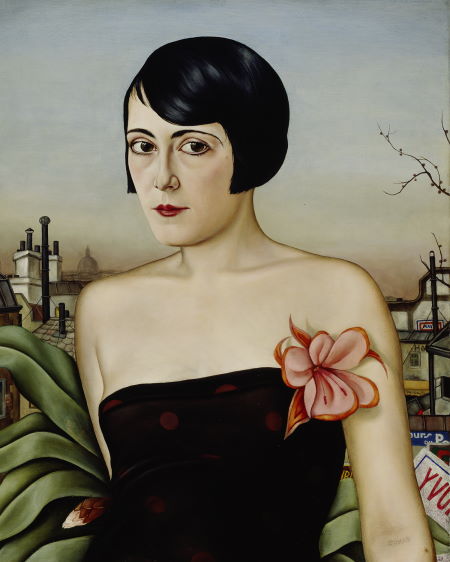
© Christian Schad Stiftung, Aschaffenburg, VEGAP, Bilbao, 2020
I ruggenti anni Venti
7 maggio – 19 settembre 2021
A cura di Cathérine Hug e Petra Joos.
La mostra è una collaborazione tra il Guggenheim Museum di Bilbao e il Kunsthaus Zürich.
Il desiderio degli esseri umani di innovare ha raggiunto il suo apice durante gli anni ’20 del XX secolo. Questo decennio ha visto lo sviluppo di idee per molti versi più progressiste di quelle odierne: piani urbani ambiziosi; le città si espansero; i modelli di ruolo convenzionali nella società messi in discussione; le minoranze iniziarono a svolgere un ruolo nella cultura e nella politica.
The Roaring Twenties si concentra su Berlino e Parigi come esempi di metropoli che ospitano queste specifiche realtà degli anni ’20, ma include anche sguardi su altri focolai d’avanguardia, come Vienna o Zurigo. Il progetto della mostra sarà creato da Calixto Bieito, acclamato scenografo dell’opera.
La linea dello spirito
11 giugno 2021 – 6 febbraio 2022
A cura di Lekha Hileman Waitoller
The Line of Wit esplora una selezione di opere della collezione permanente del Museo Guggenheim di Bilbao e prestiti a lungo termine caratterizzati come divertenti, intelligenti e sperimentali. Inesorabilmente curiosi in natura, questi lavori impiegano materiali e tecniche insoliti, e molti sfidano giocosamente le convenzioni sociali, politiche ed estetiche dimostrando ingegno e arguzia.
La prima galleria della mostra si concentra su opere che coinvolgono tecnologia e processi non ortodossi come Hichiko Happo di Yoko Ono. La seconda galleria comprende una selezione di opere di natura figurativa o figurativa di Antonio Saura, Henri Michaux, Georg Baselitz, Juan Muñoz. La galleria finale raccoglie una selezione di lavori astratti sperimentali nell’uso dei materiali o dei processi, di Prudencio Irazabal e Rodney Graham.
Film
e video: Cecilia Bengolea. Lightning Dance
24 giugno – 26
settembre 2021
A cura di Manuel
Cirauqui
Cecilia Bengolea (nata nel 1979, Buenos Aires) è un’artista multidisciplinare la cui pratica fonde video, coreografia e scultura. Nella sua indagine Bengolea esplora forme di danza popolare che uniscono elementi contemporanei e arcaici, dove riappare il concetto senza tempo di figurazione. Lightning Dance (2018) si basa su una profonda collaborazione tra l’artista e gli artisti presenti. L’opera, in questo caso, appartiene alla serie sviluppata da Bengolea intorno alla cultura di ballo nell’isola della Giamaica.
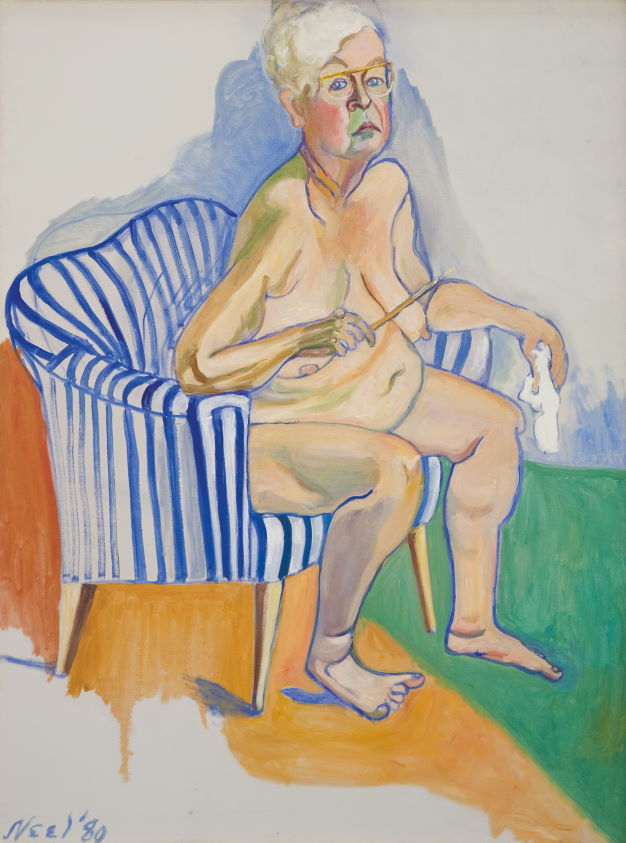
National Portrait Gallery, Smithsonian Institution, Washington DC
© The Estate of Alice Neel
Alice Neel: le persone vengono prima di tutto
17 settembre 2021 – 23 gennaio 2022
A cura di Kelly Baum, Cynthia Hazen Polsky, Leon Polsky, Randall Griffey.
Mostra organizzata dal Metropolitan Museum of Art in collaborazione con il Guggenheim Museum di Bilbao e The Fine Arts Museums di San Francisco.
Questa sarà la prima retrospettiva in Spagna dell’artista americana Alice Neel (1900 – 1984): una delle pittrici più radicali del secolo, una paladina della giustizia sociale il cui impegno di lunga data per i principi umani ha ispirato la sua vita e la sua arte, come dimostrato nei circa cento dipinti, disegni e acquerelli che appariranno in questa selezione. Immagini di attivisti che manifestano contro il fascismo e il razzismo appariranno accanto a dipinti di vittime povere della Grande Depressione, oltre a ritratti dei vicini di Neel all’Harlem spagnolo, leader di un’ampia gamma di organizzazioni politiche. La mostra metterà anche in risalto gli acquerelli e i pastelli erotici di Neel degli anni ’30.
Film e video: Sharon Lockhart. Notazione del movimento di Noa Eshkol
7 ottobre 2021 – 27 febbraio 2022
A cura di Manuel Cirauqui
Le installazioni video e le opere fotografiche di Sharon Lockhart (nata nel 1964, Norwood, USA) prestano particolare attenzione all’azione umana e alle sue modalità di rappresentazione sia sociale che in solitudine. Dal lavoro artistico alla coreografia, mette in luce la complessità e la profondità poetica di un semplice movimento. Tra le molte indagini di Lockhart su questo argomento, la riflessione sul lavoro della ricercatrice, teorica e coreografa israeliana Noa Eshkol (1895 – 1969) occupa un posto eccezionale nell’ultimo decennio di produzione dell’artista. Eshkol è nota per i suoi sforzi pionieristici nel trascrivere i movimenti umani in un sistema di scrittura in grado di registrare quasi tutte le modalità di movimento del corpo. Questa installazione è il risultato di una speciale collaborazione con la collezione Thyssen Bornemisza Art 21 (TBA21) e The Wellbeing Project.
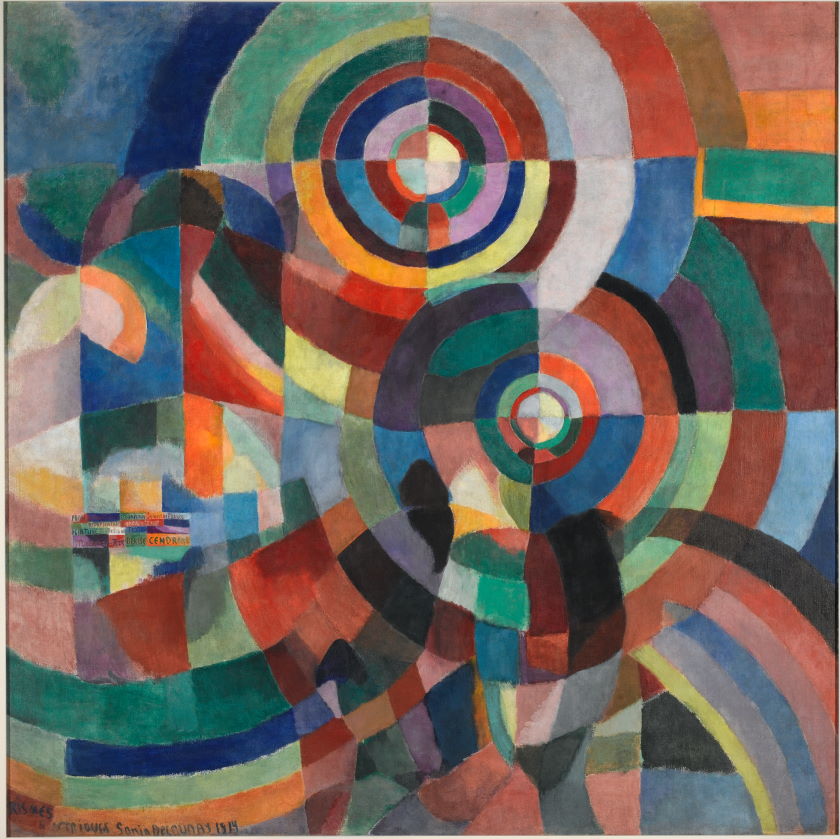
Electric Prisms (Prismes électriques), 1914
Centre Pompidou Collection, Paris,
Musée national d’art moderne -Centre de création industrielle Artwork © Pracusa S.A.
Photo: © Centre Pompidou, MNAM-CCI/Philippe Migeat/Dist. RMN-GP
Donne nell’astrazione
22 ottobre 2021 – 27 febbraio 2022
A cura di Christine Macel, Karolina Lewandowska, Lekha Hileman Waitoller.
Mostra organizzata dal Centre Pompidou, Parigi, in collaborazione con il Museo Guggenheim di Bilbao.
Women in Abstraction mira a tracciare una storia dell’arte meno raccontata, principalmente dal XX e XXI secolo, concentrandosi sul contributo delle artiste all’astrazione. La mostra comprende oltre 200 artisti che lavorano in diverse discipline, come danza, arti applicate, fotografia, film e performance art dall’America Latina, dal Medio Oriente e dall’Asia, dall’Europa e dagli Stati Uniti per raccontare una storia ampia e complessa con molte voci.
ART PROGRAM 2021
The Director General Juan Ignacio Vidarte and the curatorial team of the Guggenheim Museum Bilbao present the eight exhibitions in the Art Program 2021. This year’s art program is characterized by the quality and variety of the shows, which are highly engaging for different types of audiences. Furthermore, this ambitious program highlights the leading role of women artists, which will be a constant presence in the Museum galleries throughout the year.
Bilbao and Painting
January 29 – August 29, 2021
See above
Film & Video: Alex Reynolds. There is a Law, There is a Hand, There is a Song
February 19 – June 13, 2021
Curated by Manuel Cirauqui.
Alex Reynolds (b. 1978, Bilbao) is an artist and filmmaker who is constantly driven to explore and test out the narrative structures, sequences of commands, and pacing structures at work in cinematic production. Often using intangibly fictional registers, her work measures tensions between being a spectator and a witness.
Reynolds’s most recent work includes a number of collaborations with choreographer Alma Söderberg, amongst which being The Hand that Sings, a most recent production to be shown for the first time on the occasion of this exhibition.
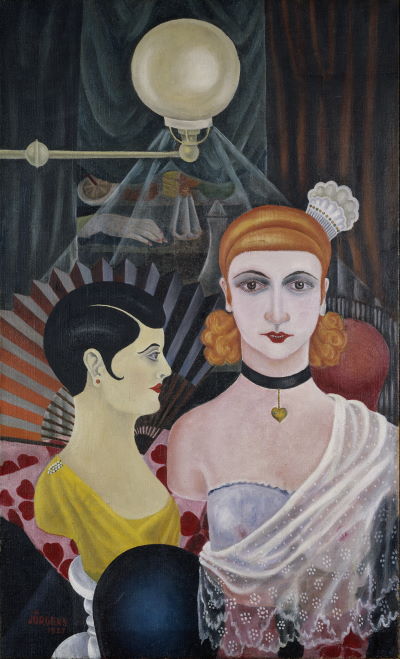
© Sprengel Museum Hannover, Grethe Jürgens Legacy
The Roaring Twenties
Dates: May 7 – September 19, 2021
Curated by Cathérine Hug and Petra Joos
The exhibition is a collaboration between Guggenheim Museum Bilbao and Kunsthaus Zürich.
Humans’ desire to innovate reached its peak during the 20th century in the 1920s. This decade witnessed the development of ideas in many ways more progressive than those of today: ambitious urban plans; cities expanded; conventional role models in society were questioned; minorities started to play a role in culture and politics.
The Roaring Twenties is focuses on Berlin and Paris as examples of metropolises home to these specific realities of the 1920s, but also includes looks at other avant-garde hotbeds, such as Vienna or Zurich. The exhibition design will be created by Calixto Bieito, acclaimed opera stage designer.
The Line of Wit
Dates: June 11, 2021 – February 6, 2022
Curated by Lekha Hileman Waitoller
The Line of Wit explores a selection of work from the Guggenheim Museo Bilbao’s permanent collection and long-term loans characterized as humorous, clever, and experimental. Relentlessly inquisitive in nature, these works employ unusual materials and techniques, and many playfully defy social, political, and aesthetic conventions demonstrating ingenuity and wit.
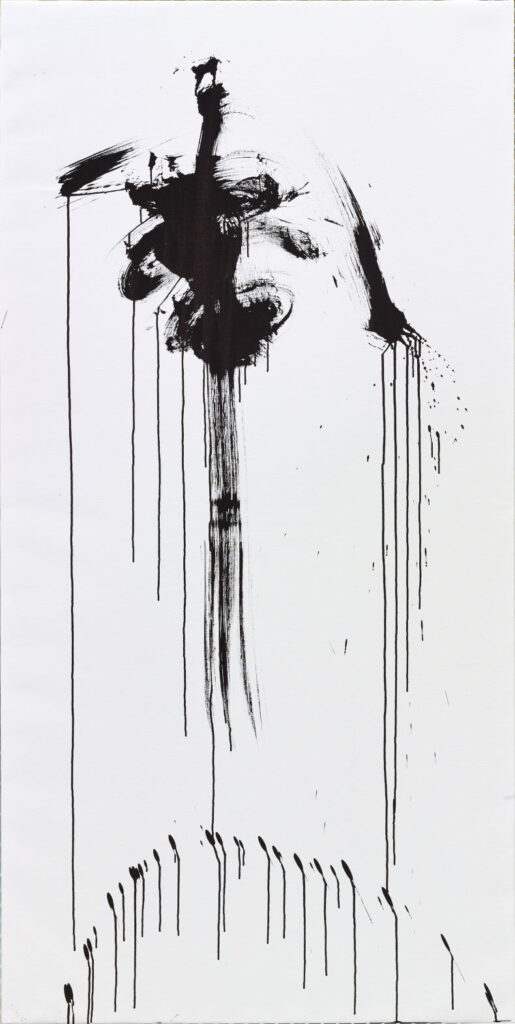
The first gallery of the exhibition focuses on works that engage technology and unorthodox processes such a Yoko Ono’s Hichiko Happo. The second gallery is comprised of a selection of works that are representational or figurative in nature by Antonio Saura, Henri Michaux, Georg Baselitz, Juan Muñoz. The final gallery draws together a selection of abstract works that are experimental in their use of materials or process, by Prudencio Irazabal and Rodney Graham.
Film & Video: Cecilia Bengolea. Lightning Dance
Dates: June 24 – September 26, 2021
Curated by Manuel Cirauqui
Cecilia Bengolea (b. 1979, Buenos Aires) is a multidisciplinary artist whose practice merges video, choreography, and sculpture. In her investigation, Bengolea explores forms of popular dance which combine contemporary and archaic elements, where the timeless concept of figuration reappears. Lightning Dance (2018) is based on a profound collaboration between the artist and the featured performers. The work, in this case, belongs to the series developed by Bengolea around dancehall culture on the island of Jamaica.
Alice Neel: People Come First
Dates: September 17, 2021 – January 23, 2022
Curated by Kelly Baum, Cynthia Hazen Polsky, Leon Polsky, Randall Griffey
Exhibition organized by The Metropolitan Museum of Art in association with the Guggenheim Museum Bilbao and The Fine Arts Museums of San Francisco.
This will be the first retrospective in Spain of American artist Alice Neel (b. 1900; d. 1984): one of the century’s most radical painters, a champion of social justice whose longstanding commitment to humanist principles inspired her life as well as her art, as demonstrated in the approximately one hundred paintings, drawings, and watercolors that will appear in this survey. Images of activists demonstrating against fascism and racism will appear alongside paintings of impoverished victims of the Great Depression, as well as portraits of Neel’s neighbors in Spanish Harlem, leaders from a wide range of political organizations. The exhibition will also highlight Neel’s erotic watercolors and pastels from the 1930s
Film & Video: Sharon Lockhart. Noa Eshkol’s Movement Notation
Dates: October 7, 2021 – February 27, 2022
Curated by Manuel Cirauqui
The video installations and photographic works of Sharon Lockhart (b. 1964, Norwood, USA) pay particular attention to human action, and its modes of representation be it social or in solitude. From artistic work to choreography, she highlights the complexity and poetic depth of a simple movement.
Among Lockhart’s many inquiries into this subject, reflection on the work of Israeli researcher, theorist, and choreographer Noa Eshkol (b. 1895; d. 1969) has an exceptional place in the artist’s last decade of production. Eshkol is known for her pioneering efforts to transcribe human movements into a writing system capable of registering almost all body movement modalities. This installation is the result of a special collaboration with the Thyssen Bornemisza Art 21 (TBA21) collection and The Wellbeing Project.

Gift of the Soviet State, 1988
Centre Pompidou Collection, Paris
Musée national d’art moderne – Centre de création industrielle
Artwork: © Adagp, Paris
Photo: © Centre Pompidou, MNAM-CCI/Philippe Migeat/Dist. RMN-GP
Women in Abstraction
Dates: October 22, 2021 – February 27, 2022
Curated by Christine Macel, Karolina Lewandowska, Lekha Hileman Waitoller.
Exhibition organized by the Centre Pompidou, Paris, in collaboration with the Guggenheim Museum Bilbao
Women in Abstraction aims to trace a lesser-told history of art primarily from the 20th and 21st centuries by focusing on the contribution of women artists to abstraction. The exhibition includes over 200 artists working across disciplines, such as dance, applied arts, photography, film, and performance art from Latin America, the Middle East and Asia, Europe, and the United States in order to tell an expansive and complex story with many voices.
M.C.S.
Guggenheim Press, january, 18, 2021
